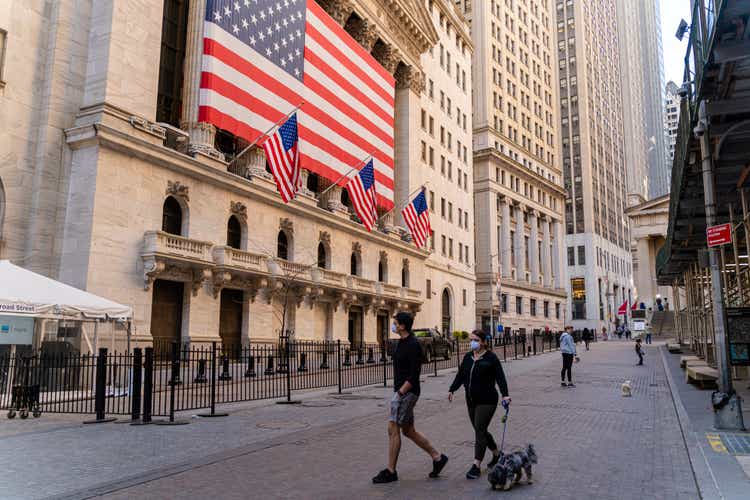Alex Potemkin/iStock Unreleased via Getty Images
Investors accelerated their cautious turn on Friday, sending stocks sharply lower and adding to weakness seen in the previous session. Worries surrounding the Russian assault on Ukraine and the future of interest rates continued to weigh on the market, causing participants to move towards safety.
The major averages came off their lows going into the close but still recorded notable weakness on the day. The Nasdaq (COMP.IND) closed with the worst performance among the major averages, -1.7%. S&P (SP500) ended -0.8% and the Dow (DJI) declined -0.5%.
Looking at preliminary closing numbers, the Dow retreated $179.86 to finish at 33,614.80. The S&P 500 posted a retreat of 34.62, ending the session at 4,328.87. The Nasdaq concluded trading at 13,313.44, a decline of 224.50 on the day.
Russia’s attacks on Ukraine have intensified, as the Zaporizhzhia nuclear plant, the largest in Europe, was overran by Russian forces after heavy shelling.
Given the continued uncertainty about the conflict, the VIX is finished sharply higher, above 32. Meanwhile, five of 11 S&P sectors closed higher, with Energy and Utilities showing the biggest gains. Among the decliners, Consumer Discretionary and Information Technology posted the largest drops.
Rates dipped, with the 10-year Treasury yield down 11 basis points to 1.74% and the 2-year down about 5 basis points to 1.49%.
European stock markets also fell sharply, as the euro is at its lowest level against the greenback since May 2020. Oil prices rose up as well, with WTI crude back above $115 per barrel.
In economic news, investors reviewed the latest jobs report, although the impact was overshadowed by the events in Ukraine. Nonfarm payrolls jumped by 678K in February, with January upwardly revised. The labor force participation rate ticked up to 62.3%.
“It’s not a surprise to see a stronger-than-expected jobs report in February, as Omicron cases started to decline quickly during the month, which boded well for the labor market,” Julian Koski, New Age Alpha CIO said. “Throughout the pandemic, we have seen stronger jobs numbers during times of declining Covid cases and vice versa.”
“Because of the tragic events in Russia and Ukraine, global stocks are currently being priced based on uncertainty, rather than known financial information, which is what traditionally drives stocks,” Koski added. “In this uncertain environment, there is an increase in vague and ambiguous information across the markets, which may lead investors to make impulsive decisions out of fear.”
“Investors have no control over what happens with inflation, Federal Reserve policy and how the situation in Russia and Ukraine may unfold. Investors can control which stocks they invest in, and we would advise investors to determine if the individual companies they are invested in can meet the growth expectations that are baked into their stock price.”
Among active stocks. PVH is the biggest decliner in the S&P as apparel stocks tumble.
